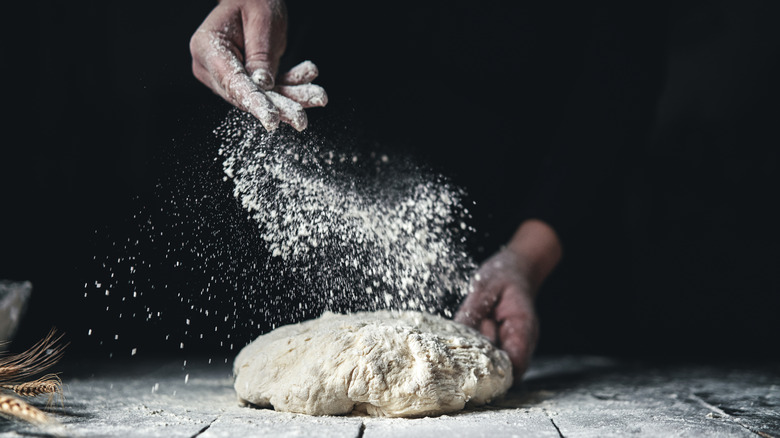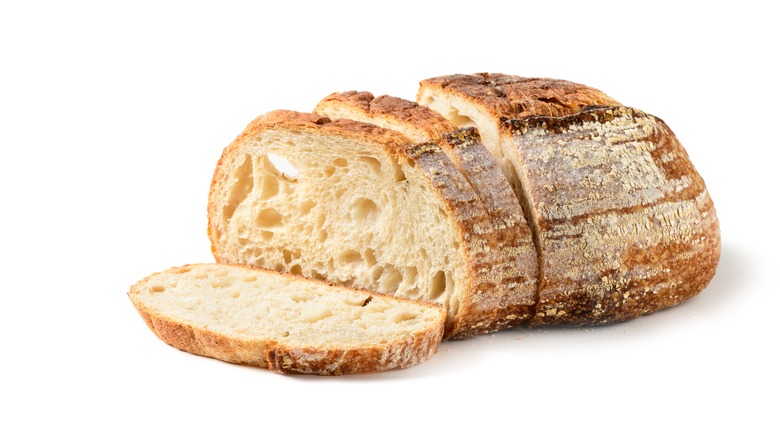What Happens When You Add Too Much Flour To Homemade Bread
In many ways, baking is similar to conducting a science experiment. You're using a formula (also known as a recipe) in the hopes of achieving a certain result. But, as anyone who has tried to make bread knows, any miscalculations or errors that occur during the process can lead to disaster.
Sometimes you can only figure out what went wrong after your homemade bread has come out of the oven. Cut a slice off the loaf and take a look: Is it dry and crumbly? You've probably added too much flour. It's a common mistake, especially for newer bakers. When there's too much flour and not enough liquid, the whole rising process is thrown off. The dryness of the dough will prevent the yeast or another rising agent from activating properly, leading to a stunted rise (or it may not rise at all). The resulting loaf will be dense as well as dry. Too much flour may also affect the taste since the other ingredients will be impacted — so taking the proper precautions when baking bread at home is important.
Ways to avoid using too much flour
No one wants a leaden loaf of dry, crumbly bread, and, fortunately, there are ways to prevent this type of baking nightmare. There's a reason why baking recipes call for flour to be weighed on a scale rather than measured. The scale gives a more accurate measurement, and that's key for keeping the ratio between dry ingredients and wet ingredients just right. After all, you need enough liquid present in the dough to allow the yeast to be able to grow.
Don't be afraid of sticky dough. It may simply be a sign that it needs more kneading rather than requiring more flour. Do take care with how much flour you put down on your counter when kneading. The dough does pick up the flour that way, too.
If you find yourself with dry dough on your hands, there are a couple of ways to try to rescue it: Adding liquid — either water or milk will work — helps rehydrate the dough. You want to do this slowly, so go teaspoon by teaspoon. Putting on a bit of extra fat in the dough could help, as well.

